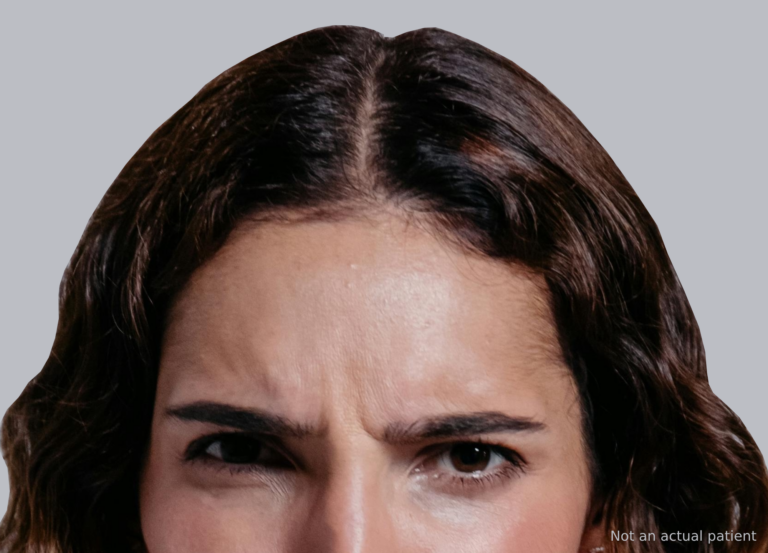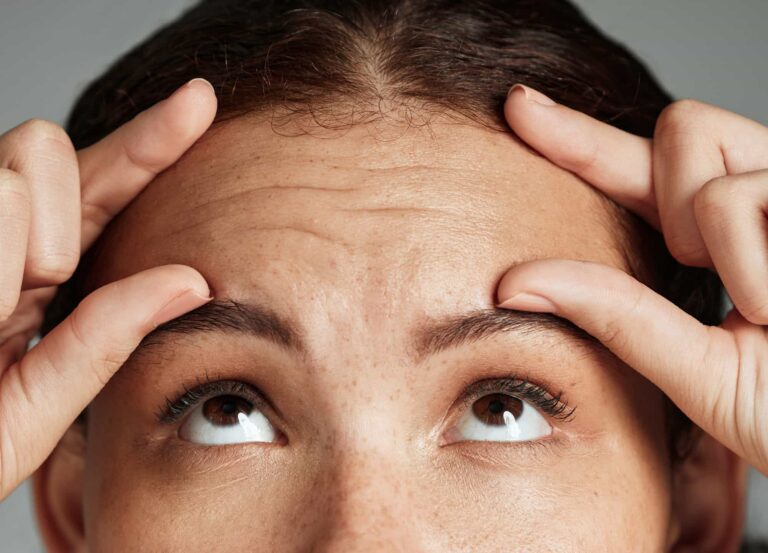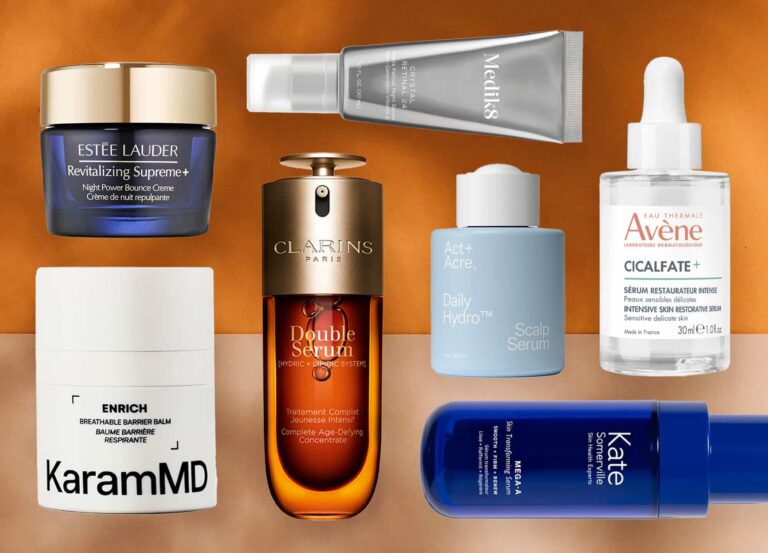First, there was Botox. Around for decades, the original injectable neuromodulator has become so much of a household name that it’s often used to describe all neurotoxins—it’s the Kleenex effect. The stats back up its ever-growing popularity: In the past 20 years, the number of botulinum toxin procedures done every year has increased by 459%, according to the American Society of Plastic Surgeons’ 2020 report. Not surprisingly, other neurotoxins, such as Xeomin, Dysport, and Jeuveau, have arrived over the years, as Botox alternatives.
While each uses a slightly different type of neurotoxin, they all work the same way: They block the neurotransmitters that pass messages between your nerves and muscles, temporarily paralyzing your muscles and, when injected into skin, relaxing wrinkles and fine lines. It’s not easy to determine the best Botox alternative—assuming you’re not using Botox in the first place, that is. Each neurotoxin comes with distinct abilities and characteristics that impact its final results, how long it lasts, and more.
To find out which is best for you, we’ve rounded up key topics for discussion with your injector. They’ll help narrow down your choices and ensure you’re getting the best possible results for your needs.
Talking point #1: How long you’ve been getting neurotoxins
Though it’s rare, your body can become resistant to the neurotoxin over a long period of time. “The body can sometimes develop an immune response to the injections,” says New York City board-certified dermatologist Dr. Michele Green. “This will cause the body to break down the injection of the neurotoxin very quickly so that it’s no longer effective.”
When this does happen, she recommends Xeomin, which differs from Botox, Dysport, and Jeuveau due to its composition. “It comes in a powder form, with only one ingredient, botulinum toxin A, whereas Botox and Dysport have additives,” says Dr. Green. “The benefit of a pure-form injectable neurotoxin such as Xeomin is that the body is less likely to become resistant to it.”
However, the odds of your body’s building resistance is, again, incredibly low. More likely, says Laguna Niguel, California, board-certified dermatologist Dr. Lorrie Klein, is that either the dose is too low or you’ve developed recruitment. “That’s when you start using other muscles or part of the muscle that is not injected in order to create a ‘work-around’,” she explains. “It’s the brain saying, ‘I really want to move this area, so I’ll find another way to do it!’” If that’s the case, your injector should be able to switch the injection locations accordingly, to account for it.
Talking point #2: How many areas you want to treat
Not only is Botox the OG neurotoxin, but “Botox is also FDA-approved to treat additional cosmetic and medical areas,” says Dr. Green. It’s the only neurotoxin with FDA approval to treat wrinkles on the forehead, crow’s-feet, and moderate to severe lines between the brows (the “11” lines), not to mention migraines, excessive sweating, and other medical concerns. Another advantage: A 2014 study suggested that Botox may improve elasticity to further improve the appearance of wrinkles, though the exact mechanism through which that happens is unclear. It is worth noting, however, that it’s common practice for doctors to use off-label injectables—and Dysport, Jeuveau, and Xeomin are frequently used to treat forehead lines and crow’s-feet.
Talking point #3: How frozen you like to look
To get a “frozen” look, the neurotoxin in question can’t budge. “[In my experience], Jeuveau is more precise than Botox and stays where you put it, which is ideal if you don’t want the product to spread and affect nearby muscle fibers,” says Dr. Klein. Because it’s so good at staying in place, she prefers to use it for the forehead. In this area, any spreading—meaning the product actually spreads out within the skin and impacts a larger area than intended—can lead to a droopy-looking brow, aka a temporary yet annoying condition called brow ptosis.
Talking point #4: Whether you need it to “spread” more
Certain areas, on the other hand, may actually benefit from a neurotoxin’s spreading out. “If you use Botox as your baseline, Dysport diffuses more,” says Dr. Klein. “So you might choose to use it in a broader area [where] you want to take advantage of that property.” For instance, she’ll save it for the crow’s-feet, where you may need fewer injections as a result.
Talking point #5: How soon you need its effects to kick in
How long neurotoxin injections take to work is a tough question to answer, since certain brands have different timelines. Dr. Klein has had the best experience with Jeuveau, which, she says, “kicks in the fastest, usually starting in one to two days in about 80% of patients.” Dr. Green prefers Dysport, as it can create visible results in as soon as two days, with the majority of her patients seeing full results by day three. “The duration of action is shorter for Dysport,” she explains.
Related: How to Know if Botox, Dysport, Xeomin, or Jeuveau Will Work Better for You
Talking point #6: How long you want it to last
With the right dose and a skilled injector, all four neurotoxins on the market can last equally long, says Dr. Klein. The recommended frequency is every three to four months, although the durability can vary, depending on who you ask. “Some patients feel Jeuveau lasts longer than others,” she says.
However, there are differing opinions on this. “In clinical use, some dermatologists have commented that they thought Jeuveau doesn’t seem to last as long as Botox or Dysport,” says Dr. Green. And to support Dysport’s case, Dysport’s parent company, Galderma, recently published a study finding that the majority of patients are satisfied with just two treatments a year—implying that treatment every six months would suffice.
Talking point #7: If you’re looking for a “clean” option
For a vegan Botox alternative, Xeomin is your best bet. While the other neurotoxins have additives and proteins (which serve as preservatives), “Xeomin is produced without any preservative proteins and is thus considered a more concentrated and pure form of Botulinum toxin,” says Dr. Green. “Because of the lack of additives, it is called a ‘naked injectable.’” It’s as pure as an injectable neurotoxin can get.
Talking point #8: What your budget is like
Xeomin and Jeuveau stand out for their relatively lower price tag, but there are some caveats. “I find that Xeomin is very similar to Botox, except that 20–25% more product is needed to equal the effects of Botox,” says Dr. Klein. “It is a less expensive product, but if additional product is needed to achieve the desired result, it may end up not being less expensive—or results may not be as good, if an equal dose is used.”
Jeuveau, meanwhile, is the newest of the four, which is why you might find it priced lower, depending on the injector, your location, and other factors that impact cost. “Jeuveau is strategically priced lower than Botox to gain market share,” Dr. Green explains. “Therefore, many injectors offer Jeuveau at a lower price.”
The bottom line
Ultimately, your doctor will likely have the final say in which neurotoxin you get. These talking points can steer you in the right direction and give you a better understanding of all the factors at play when making that decision.











